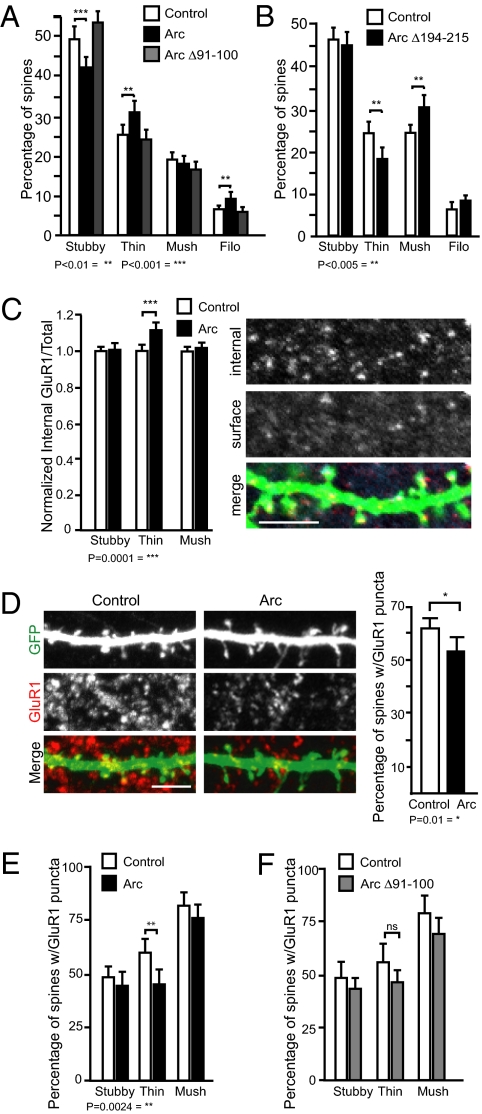Fig. 2.
Arc-mediated GluR1 endocytosis is required for alterations in spine morphology. (A) Deletion of endophilin interaction domain in Arc (Arc Δ91–100) blocks its ability to regulate spine morphology. One-way ANOVA with post hoc Tukey test, F(3.244)= 13.07stubby, 6.536 thin, 0.7452mushroom, 5.304filopodia; **P < 0.01, ***P < 0.001. More than 1,500 spines from 40 dendrites over three experiments per condition were analyzed. (B) Deletion of the dynamin interaction domain alters effect of Arc on spine morphology. Expression of Arc Δ194–215 decreases percentage of thin spines and increases percentage of mushroom spines. t test, **P < 0.005. More than 2,000 spines from 45 dendrites were analyzed in two experiments per condition. Error bars represent 95% CI. (C) Arc expression leads to an increase in the ratio of internal-to-total GluR1 at thin spines. t test, ***P = 0.0001. More than 100 spines of each type over three experiments per condition were analyzed. An example of internal and external surface staining is shown to the right. (D) Arc expression decreases the percentage of spines with surface GluR1. t test, *P = 0.01 (E) Surface GluR1 is specifically decreased in thin spines. t test, **P = 0.0024. More than 3,500 spines from 26 to 27 cells were analyzed per condition over five experiments. (F) Arc Δ91–100 expression does not reduce GluR1 surface expression at thin spines. (Scale bar, 5 μm.)

